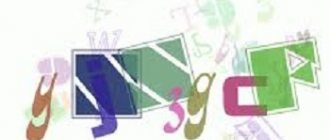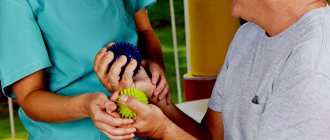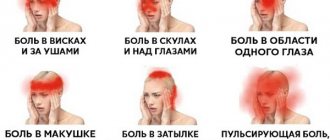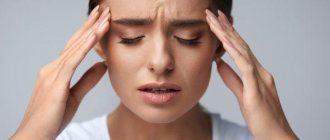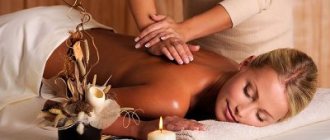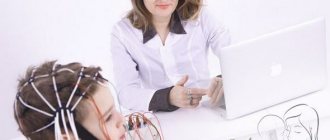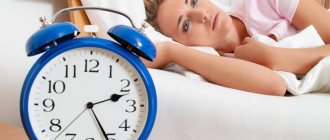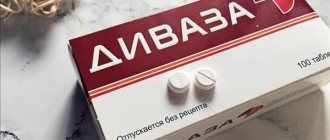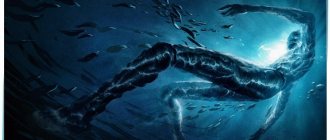Microneedling is a type of acupuncture. A course of procedures allows you to relieve stress, restore vitality, increase performance and improve mood. The mechanism of action of microneedling on the human body is to stimulate biologically active points, regulate biochemical and energy processes in the body, normalize the functioning of the nervous system and other organs.
A distinctive feature of this technique from ancient Chinese medicine is the long-term effect of microneedles on reflex zones. The needles may remain in the patient's ears and skin elsewhere on the body for several days, while corporate acupuncture lasts no more than an hour. When wearing microneedles, a person does not experience any inconvenience or discomfort: they do not interfere with playing sports, sleeping, showering, etc.
Teaching about points and channels
of points and channels never existed
. The classics of reflexology claim that there are 360 points on the human body, or 720 points taking into account the symmetry of the human body.
These points were discovered 5000 years ago, and their existence is usually confirmed by the presence of a healing effect
their applications. But the healing effect can also be explained by time and care.
in the electrical resistance of the skin was quite objectively detected
at points, some authors insist that a decrease in electrical resistance is also observed along the channels.
A number of authors believe that the channel system should be abandoned; objectively, only points exist. It is also possible that, if desired, using a sensitive device, you can detect at least 10,000 points
.
Formation of systems of points
Reflexology begins in the human embryo and goes in parallel with the formation of internal tissues and organs. At the same time, a connection is established between the reflexology points and the internal organs, which makes it possible to influence the internal organs by influencing the points. This relationship is finally formed at the time of the birth of a new person.
“dotted lines” in Chinese.
, in the European tradition they are called meridians. Each channel relates to one of the five elements, but each channel contains points related to each of the elements, and these points are located on the hands and feet.
Among the points of any channel there are so-called main points
, located from the hand to the elbow and from the foot to the knee. The main points are assigned certain functions - tonic, sedative, stabilizing, “accomplices”, “heralds”, “success” and painkillers.
Herald points
, performing the signaling function, correspond to the Zakharyin-Ged zones opened at the end of the 19th century in Russia and England.
The number of points on a certain channel seems arbitrary and is not explained in any way. In addition to the points combined into channels, there are about 150 extra-channel points
. Such points exist on the auricle, where the correspondence of the points to the projections of all parts of the body is revealed.
Off-channel points
found in the nasal cavity and oral cavity. Such points and zones of all organs are also found on the foot and hand. Extra-channel points are most likely not points, but zones localized around the joints; their purpose is extra-organismal connections.
The method developed if a bronze statue with dots
, combined into 12 external paired canals, then after another 200 years 2 middle canals were added to them. The middle channels belong to the fire system, one of them is Yang, the other is Yin.
This is not the end
, they continued to look for them and found them. To the 12 main channels (or meridians), 8 extraordinary, or “miraculous” channels were added, as well as muscular ones, diverging and connecting.
Until now, no one has yet supported or opposed the presence or absence of meridians-channels-lines
could not finally establish his point of view.
Reflexology methods
Reflexology
is a collective term for a variety of therapeutic techniques, which include acupuncture, moxibustion, acupressure, cupping therapy, plate application, electroreflexotherapy, magnetic puncture, laser reflexology, apyreflexotherapy.
Reflexology method
modern science classifies it as alternative medicine, and it is successfully combined with traditional treatment.
Acupuncture (acupuncture)
The benefits of acupuncture are recognized in almost all countries and it is used to treat many diseases. With acupuncture
Needles made of various metals and alloys - gold, silver, stainless steel - are inserted into the active points.
The ends of the needles are sharp
, the presence of burrs is not allowed, but the needles cannot be too sharp, because in this case, tissues may be injured.
Needles are inserted with patients sitting, lying on their back, lying on their stomach, lying on their side. The needle is inserted simultaneously with both hands
– the needle is held with the right hand, and pressure is applied with the left.
The needle can be inserted perpendicularly, obliquely at an angle of 45°, or horizontally (insertion angle 10-15° to the surface). After needle insertion
to the required depth (for old people and weak patients the injection is superficial, and for strong patients it is deeper), measures are taken for the “arrival of Chi”.
This is punctuation
(the needle “pecks” the point), rotation, pressure and massage, tugging, scratching, shaking, rapid rotation to the right and left 3 times, shaking.
The needle may be left in the body
patient for a period of 10 to 30 minutes, up to two hours. Upon completion of the procedure, the needle is removed, after which pressure is applied to the point to prevent bleeding.
Cauterization
Cauterization
consists in the effect of heat on the active point. Moxibustion is used in conjunction with acupuncture; they complement each other perfectly. Cauterization is used with moxa cones and moxa cigarettes.
Moxa cotton wool
- This is dried crushed wormwood powder.
Sometimes in moxa cigarettes
special additives are introduced. There is also a method of warming up already inserted needles.
Acupressure
Massage is used on reflexology points without compromising the integrity of the skin. Massage of individual points is called acupressure, along the course of the canals - superficial. Traditional massage involves a combination of acupressure and superficial massage. The therapeutic effect is similar to the effect of segmental massage in Zakharyin-Ged zones
.
Vacuum reflexology (cupping therapy)
Banks
act on acupuncture points through negative atmospheric pressure.
Sometimes cupping is combined with bloodletting
, the jar is placed after the bloodletting.
Metal plate application
The method is used if the patient is afraid of acupuncture
, when treating weakened patients, as well as if the point of impact is located near a wound or a large blood vessel. It is used to treat children and pregnant women, the elderly.
Treatment plates
– these are polished metal mugs with a diameter of 2-15 mm made of gold, silver, stainless steel or red copper. The circles are placed on the dots and secured with adhesive tape.
It is believed that the presence of a hole with a diameter of 0.2-0.7 mm in the plate increases the impact effect. The plates are applied for 3-5 days
, after which a break is taken for two days.
Next overlay
plates for 3 days from another metal. Instead of applying metal plates, applications of foil, mustard plaster or pepper plaster are also used.
– this is the effect on active points with electric current. Back in 1796, it was proposed to enhance the effect of acupuncture with static electricity.
There are electroacupuncture - exposure to electric current through an inserted needle, and electropuncture - exposure to electric current through an applied cutaneous electrode.
.
Electropuncture is painless
, sterile and strictly dosed. The exciting effect is achieved by passing current through a selected point for one minute, changing the polarity every 10 seconds.
Braking effect
is achieved by passing current for 3-6 minutes with polarity changing every 40 seconds. DC voltage is from 1 to 9 volts, passing current is about 10-250 µA. A painful reaction with such currents is completely excluded.
Magnetic puncture
With magnetopuncture
The points are exposed to a magnetic field, constant or variable. It is assumed that the south magnetic pole relieves pain, and the north activates the functioning of the organ.
Laser and apyreflexotherapy
In laser reflexology, the points are exposed to pulsed radiation from a low-power laser. And with apireflexotherapy, the points are affected by bee stings
.
Contraindications to the procedure
RELATED POSTS:
to reflexology are
:
- benign and malignant tumors;
- infectious diseases in the acute stage;
- general exhaustion of the body;
- elevated temperature;
- infancy;
- pregnancy;
- mental excitement;
- state of alcohol or drug intoxication;
- active form of tuberculosis;
- blood clotting disorder;
- venous thrombus formation in the acute stage.
Also, treatments are not carried out on days when other procedures are prescribed.
(UV irradiation, x-ray therapy, ultrasound, etc.).
The reflexology method is effective when selected correctly
active points of influence. At the same time, the system is protected from some errors when selecting points, since if the principles of selecting points are followed, errors are suppressed and positive effects are enhanced.
Watch the video to see how treatment with reflexology works:
Good evening. Today I will introduce you (who still doesn’t know what it is) to such a medical term as reflexology. From today's article you will learn what it is, as well as when it is used, how often it can be prescribed by doctors - this post is about all this.
What is reflexology, how does it affect the body?
In neurology, reflexology has been used for quite a long time and rightfully has well-proven treatment methods.
In essence, this is a medical specialty that involves knowledge and skills in the treatment of chronic and indolent diseases.
Reflexology has many different therapeutic techniques and methods of influencing reflexogenic zones using acupuncture, acupressure or moxibustion. Only a doctor can determine which specific treatment method is suitable for a particular disease.
How does it affect the body?
During reflexology sessions, the doctor, acting on certain, necessary points on the patient’s body, triggers the mechanism for restoring the neuro-reflex regulation of the body.
The result of this impact is that the following are activated:
- central nervous system
- endocrine system
- neurohumoral system
- the immune system
- vascular system
And thanks to this activation, the work of all organs is normalized, and the overall performance also increases, the patient’s sleep and his mood noticeably improve, the patient forgets about the headaches that previously tormented him.
Many people, after a course of reflexology, simply choking, share their impressions with complete delight and tell everyone they know about their unprecedented vigor. This can be described in two words – born again!
But don’t think that this is a panacea for all ills. Of course, this is far from the case. It’s just that reflexology courses are simply necessary for almost every patient at the stage of the early recovery period after an illness.
Contraindications
Reflexology, the indications and contraindications of which must be studied in detail to calculate the course of therapy, includes the following contraindications:
- infectious diseases (hepatitis, tuberculosis, AIDS, purulent and venereal inflammation);
- age up to 3 years or after 75 years;
- malignant neoplasms (the effect of the procedure on blood circulation may contribute to tumor growth);
- pregnancy (the procedure may affect uterine contractions, leading to premature birth);
- skin diseases;
- blood diseases (leukemia and hemophilia);
- state of alcohol and drug intoxication;
- acute surgical pathologies (hernias, ulcers, appendicitis);
- feverish state (increased temperature disrupts the functioning of the central nervous system, which can affect the result of the procedure);
- acute pain of unknown origin.
You also need to know that acupressure therapy on the body can activate disease processes, promote the occurrence of tumors and stimulate their enlargement.
Therapy should also be prescribed with caution with:
- heart disease;
- circulatory disorders;
- dermatological diseases in the affected areas;
- chronic fatigue.
Frequency of prescription of reflexology courses and its effectiveness
In general, neurologists prescribe reflexology courses quite often. This is due to the excellent results from its use in diseases of the nervous system and positive effects on the body.
A variety of methods make it possible to influence all organs and systems of the human body, while using the hidden reserves of the body, which many have heard about and which every patient has.
The treatment has many effects, including:
- anesthetic
- anti-inflammatory
- immunomodulatory effect
- autonomic functions are normalized
- metabolism
- the treatment has a calming effect
- increases performance
The main and main advantages of reflexology are its fairly simple technical support, the complete absence of adverse reactions, including allergic ones.
Acupuncture methods can complement or even replace other types of treatment and even pharmaceutical medications.
Auricular reflexology
The auricle contains many reflex zones and dozens of acupuncture points, each of which interacts with a specific organ. By performing acupuncture in the ear and stimulating a certain point, an experienced specialist is able to influence the organ affected by the disease at a subtle energetic and biochemical level.
Ear acupuncture is one of the most popular areas of activity at our Chinese medicine center. Among the advantages of this procedure it should be noted:
- curing a disease by activating the forces of one’s own body - the patient gets rid of the cause of the disease, and not its symptoms;
- painlessness of auricular reflexology – the procedure does not cause pain or stress;
- Ear acupuncture eliminates the need for the patient to take medications “by the hour” - microneedles do their job on their own.
In addition to eliminating the main addiction (disease, pathology), auricular reflexology improves immunity, activates the excretory system - the body is cleansed of accumulated toxins much more quickly.
For what neurological diseases is it used?
Reflexology in neurology is used in the treatment of many different diseases. Among them:
- treatment of pain syndromes
- sleep disorders
- neuroses
- neurological manifestations of spinal osteochondrosis ()
- treatment of consequences of traumatic brain injury
- peripheral neuropathies
- cerebral palsy
- logoneuroses
- and etc.
There are also contraindications. For example, it is contraindicated to conduct reflexology courses for tumor tumors, mental illness, individual intolerance, and also if the patient is over 80 years old.
How long does the course of treatment last and how likely is a positive result?
A course of reflexology always consists of 10 procedures, which are prescribed daily or every other day. If repeated treatment is required, it is completed after 4 to 6 months.
The result of acupuncture depends on the professional and competent preparation of an acupuncture prescription and the accuracy of determining the localization of acupuncture points, the technique of placing needles, as well as the experience of the therapist.
In addition to simple acupuncture, microneedling is also used. It is designed for long-term impact on certain points.
Microneedles are usually introduced after a course of classical acupuncture from 1-2 to 7 days. This alternation continues throughout the course. Periodic pressure on the microneedles irritates the point and can, in certain diseases, prevent attacks and relapses, and also consolidate the therapeutic effect of acupuncture therapy.
On average, it takes 3-4 hours to write 1 article. By sharing an article on social networks, you express gratitude to the blog authors for their work!!!
REFLEXOTHERAPY is a set of therapeutic techniques based on the influence of physical factors on certain point areas of the body surface with special properties (acupuncture points). To influence these points, irritation of varying strength, nature and duration is used. Depending on the location of the impact, there are corporal reflexology (impact on acupuncture points of the body surface), auricular reflexotherapy (impact on acupuncture points of the auricle), cranial reflexotherapy, or scalpotherapy (impact on acupuncture points in the head area), nasotherapy (impact on the nose). , mano- and pedotherapy (impact on the hands and feet), etc. Depending on the type of impact, acupuncture (introduction of special needles), thermopuncture (cauterization, warming with wormwood cigars), vacuum-pressopuncture (exposure to medical cups), cryopuncture ( exposure to liquid nitrogen), electroacupuncture (exposure to electric current on acupuncture points through special needles), pharmacoacupuncture (introduction of medications into active points), phonopuncture (exposure to ultrasound), laser puncture (exposure to laser beams), magnetic puncture (exposure to magnetic fields) , acupressure. Reflexology is based on the principles of traditional Chinese medicine, which has been used for many years. centuries used acupuncture and moxibustion (Zheng Chiu therapy) to treat a wide range of diseases. From the beginning 2nd floor 20th century These methods, in a modernized form, began to be widely used in Europe.
An acupuncture point is a limited area of the body with an area of 1-10 mm2 with a high density of nerve endings in the skin, subcutaneous tissue, fascia, tendons, muscles, and periosteum. At these points there is low resistance to direct electric current and higher tissue metabolism. There are several hundred points in total. Their concentration is highest in the head and distal extremities. The mechanism of action of reflexology is associated with the activation of local tissue processes, segmental and suprasegmental structures of the center, nervous system and the release of neurotransmitters and neuropeptides (in particular, enkephalins and endorphins), which have a regulatory effect on physiological processes in the body and stimulate sanogenetic mechanisms. The therapeutic effect depends on the location of the irritated points, the strength and nature of the irritation, and the body’s reserve capabilities. To plan individual treatment, in addition to routine clinical diagnostics, electropuncture diagnostics are performed to assess the condition of acupuncture points. The mechanisms of action of reflexology in general remain hypothetical, and approaches to dosing and the choice of treatment methods are exclusively empirical in nature.
Experience in using reflexology methods in modern medicine. practice has shown that it is most effective for functional disorders caused by a violation of neurogenic mechanisms regulating the function of certain organs or systems (neuroses, sexual disorders, autonomic dystonia). Reflexology is widely used in the treatment of pain syndromes of various origins and smoking. In combination with other methods, it is used in the rehabilitation of patients who have suffered a stroke, traumatic brain injury, in the treatment of endocrine dysfunction, allergic reactions, skin and gynecological diseases. Basic Contraindications to reflexology are infectious and oncological diseases. It is not recommended to combine reflexology with radiation therapy, large doses of narcotic, psychotropic, and hormonal drugs.
Reflexology is a complex of therapeutic and diagnostic methods of influencing active points on the surface of the human body. Active points on the surface of the body are called acupuncture points. There are more than 800 main acupuncture points on the human body. Physical methods of reflexology include cauterization, the use of special needles, low-voltage electric currents, lasers, leeches, wormwood cigarettes, stones, seeds, metal plates or balls. Very often, reflexology is used as an additional method to drug therapy.
Micro-acupuncture procedure at the Lin Dynasty Center
An acupuncture session at our center is carried out in cycles, during which microneedles are continuously applied to the ear and other areas of the patient’s body. The duration of acupuncture cycles and their number are prescribed individually by a doctor, a specialist in Chinese medicine, and depends on the nature of the problem. On average, it is 3-5 or 5-7 days (stainless steel/gold and silver needles, respectively). The breaks between cycles are 3-7 days, the full course of treatment with microneedle therapy is 3-5 cycles. To achieve a better effect and consolidate the results, the doctor may prescribe an additional 2-3 courses of acupuncture with an interval of 1-2 months.
You can get a more detailed consultation and sign up for auricular ear reflexology at the Lin Dynasty Center by calling the numbers listed on the website.
History of reflexology
China is considered the birthplace of this treatment method. The first acupressure technique (Zheng-Jiu) was described in the fifth century BC. In European countries, this direction began to be used only in the seventeenth century AD.
In 1913, the American scientist William Fitzgerald created the basis of modern reflexology. The scientist discovered that it is possible to improve the functioning of various organs, relieve pain and inflammation by pressing on certain areas of the body surface. He outlined a diagram of the interconnection of various areas of the body, highlighting ten main lines passing through the human body.
Reflexology methods
Various methods of reflexology can slow down or speed up the movement of energy in the energy channel associated with the affected organ. When choosing one or another method of influence, the condition of the affected organ is taken into account.
The acupuncture method involves inserting steel, silver or gold needles through the skin into active points of the human body. Acupuncture is the most effective method of reflexology. The therapeutic effect of acupuncture directly depends on the method of needle insertion. Acupuncture can have a stimulating (tonic) or sedative (calming) effect on the organ system. When using microneedling, small needles are left in active spots for several days.
Auriculotherapy is the impact of acupressure or microneedles on the active points of the auricle. There are more than 200 active points on the ears. Normally, the points are painless, but in acute cases, the patient feels pain when pressing on them. In the case of a chronic disease, lumpiness, peeling, and pallor appear at their location.
Acupressure is a mechanical effect on active points using fingers or special instruments (without damaging the integrity of the skin). This method allows you to selectively and dosed regulate the functioning of various organs and systems of the body, as well as influence the restoration and metabolic functions in tissues.
Thermopuncture (warming, cauterization) – exposure of active points with heat. Typically, heating is carried out using wormwood cigars.
Electropuncture or microcurrent reflexology is treatment with electrical micropulses. The microcurrent reflexology method is used to relieve pain or as an independent method of influencing active points. Microcurrent reflexology is used in the complex treatment of children with cerebral palsy.
The method of vacuum reflexology (cupping therapy) is local irritation of the skin with rarefied air in the area of reflexogenic zones.
Magnetopuncture – exposure of active points to an alternating or constant magnetic field. It is believed that the south pole of the magnet relieves pain, while the north pole activates blood circulation and makes the organ work harder.
Laser reflexology – exposure to laser pulsed radiation. This method is effective for chronic and acute inflammatory, traumatic, degenerative diseases.
The centimeter wave reflexology method is used for spastic conditions and pain radicular syndromes. It has desensitizing, anti-inflammatory and analgesic effects.
The ultrasound reflexology method is based on micromassage of cells and tissues, restructuring of tissue microstructures and changes in microcirculation.
Facial reflexology – effects on biologically active points of the face. The effect of facial reflexology is to normalize the tone of facial muscles and improve microcirculation in its soft tissues. Facial reflexology is especially effective for nephropathy of the facial nerve.
Apireflexotherapy - influencing acupuncture points with bee stings.
How does reflexology work?
If the body is in balance, energy is distributed evenly. But if the body's balance is disturbed, its distribution changes. It reaches some organs in excess, while others receive it in insufficient quantities.
Bioactive points are like keys on the remote control of the body's energy system. By influencing them, you can restore the normal distribution of energy and the internal balance of the body. Thanks to this, the doctor acts directly on the cause of the disease and eliminates it.
Indications for reflexology
Many reviews of reflexology say that this method of treatment is used for diseases of the nervous system and sensory organs - neuritis, neuralgia, radiculitis, neuroses, neurasthenia, chronic fatigue syndrome, epilepsy, enuresis. Reflexology methods are successfully used for diseases of the cardiovascular system, eye diseases, ear diseases, lung diseases, and skin diseases. Some medical reviews about reflexology say that this treatment method is used for diseases of the musculoskeletal system, diseases of the endocrine system, gynecological diseases, diseases of the gastrointestinal tract, as well as pain syndromes of various origins and localization.
Reflexology results
In addition, reflexology helps relieve muscle spasms, eliminate physical and emotional tension, improve the passage of nerve signals, with its help numbness is treated, sensitivity and muscle contractions are normalized, and blood circulation is improved.
The impact of acupuncture, acupressure or moxotherapy on bioactive points affects the hormonal system and neurohormonal regulation, stimulates the production of dopamine, other neurotransmitters, serotonin, and endorphins.
In addition to the main meridians, there are so-called “miraculous” ones. Bioactive points on them help treat many diseases. The ears are the most saturated with bioactive points. Thanks to this, such a therapeutic method as auriculotherapy appeared.
